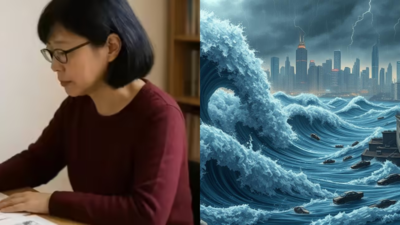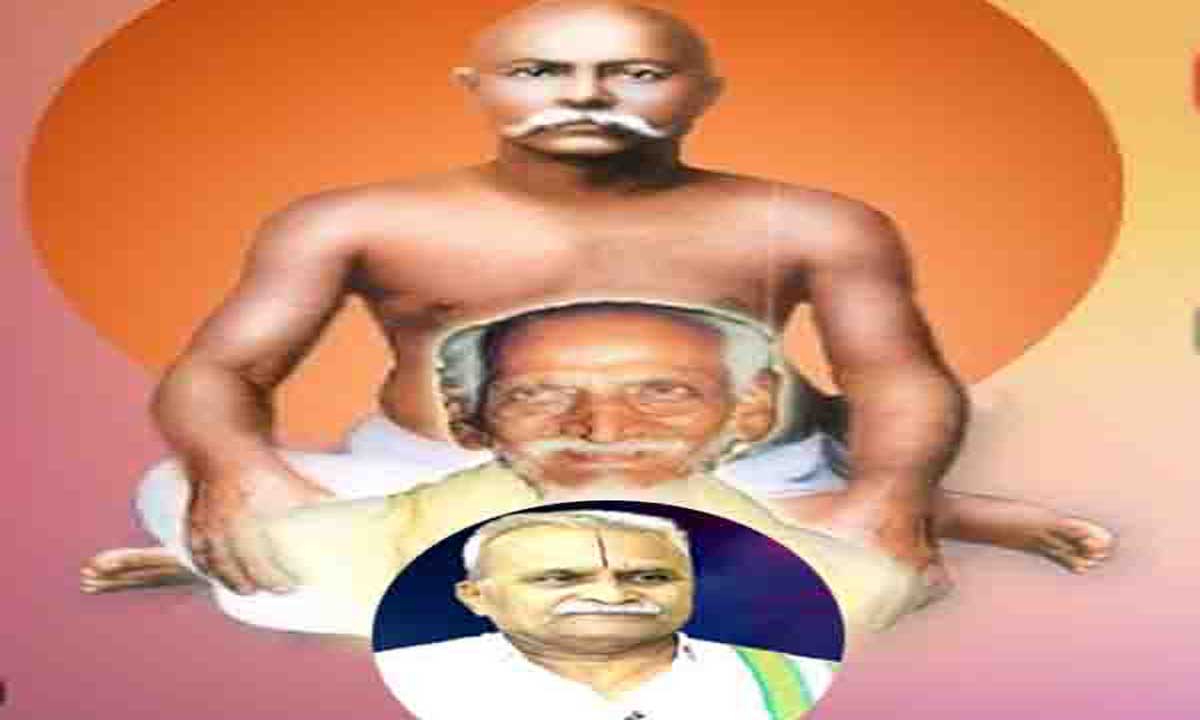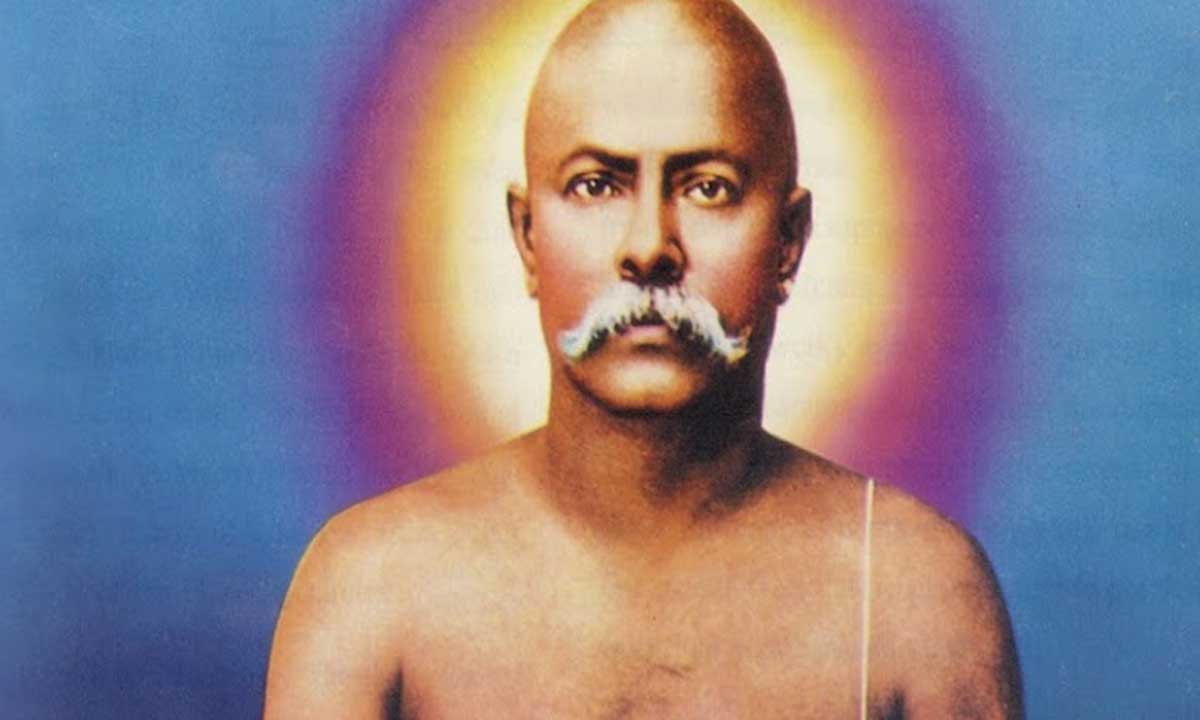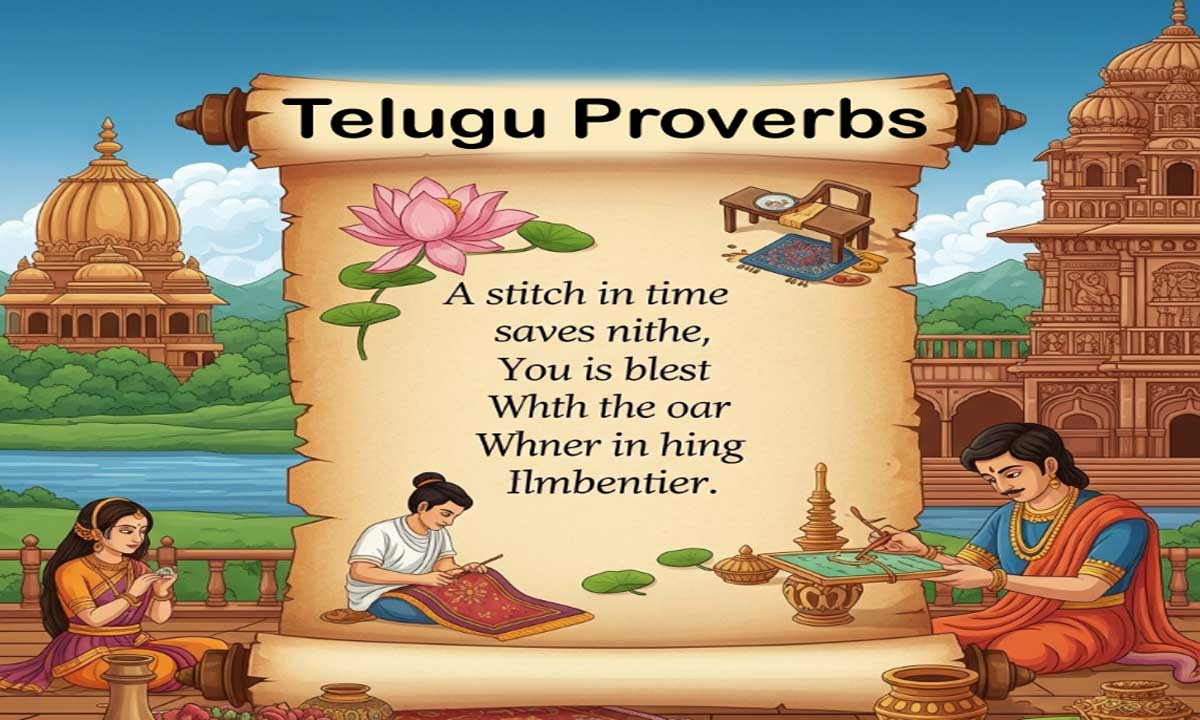Yoga Vasishtha: Is the World Real? Maharshi Vasishtha’s Dream of Reality
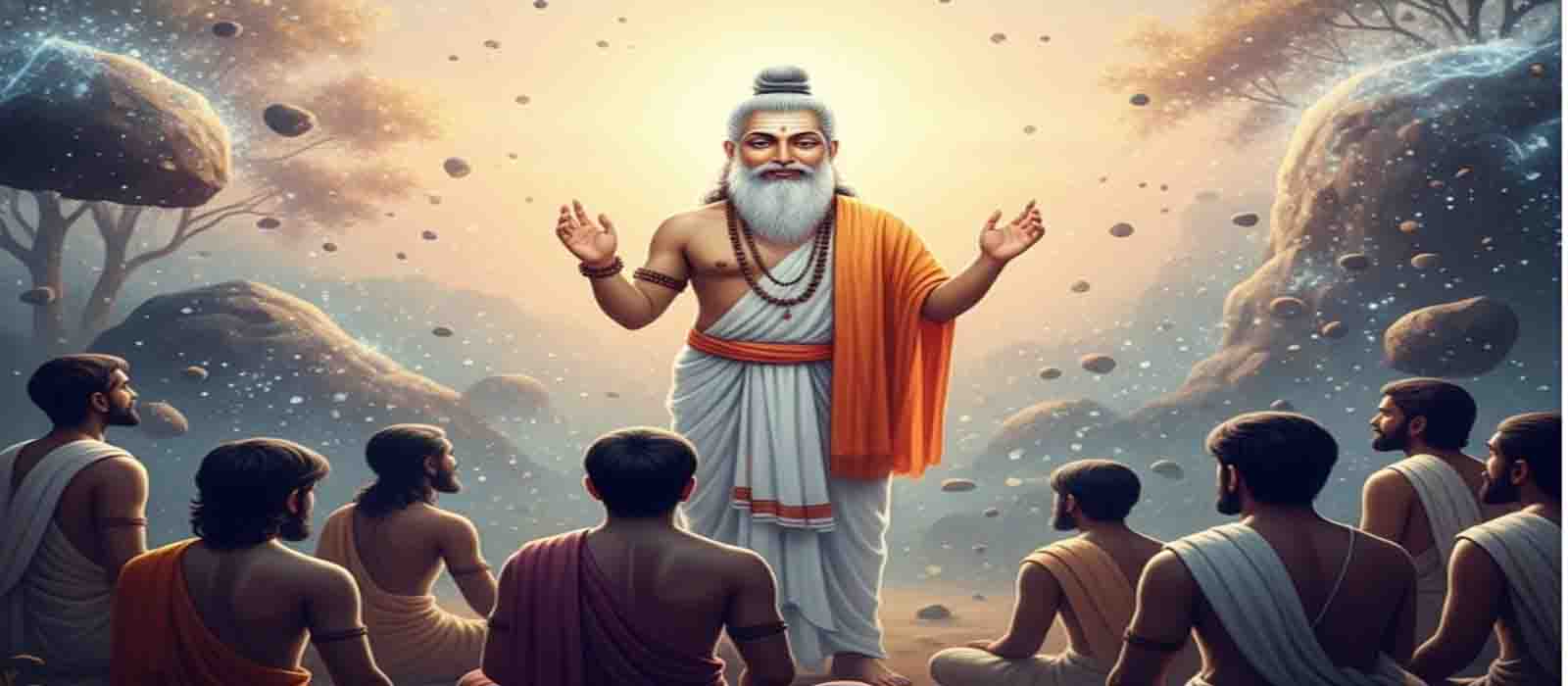
The Teachings of Maharshi Vasishtha: The Apparent World Is Not Real – A Yoga Vasishtha Perspective
Secrets from Maharshi Vasishtha’s Yoga Vasishtha: Is This World Truly Real?
When you hear “Yoga Vasishtha,” you might immediately think of a spiritual text or traditional teachings, right? But in reality, it’s not just a book. It’s an ocean of infinite wisdom that unveils our existence, the secret of creation, and the immense power of consciousness. These are the profound secrets that Maharshi Vasishtha, perfected in self-knowledge and penance, taught to Sri Rama, who was endowed with all virtues. Among those teachings, one particular insight leaves us stunned and redirects our thoughts in a new direction. And that is: “This universe, this world we see, this life we experience daily… it’s all just like a dream!”
It sounds strange and unbelievable, doesn’t it? “What? I just woke up! Are the people, things, my family, my job around me not real? Is it just a dream?” Your mind will question. This is precisely the same question Sri Rama asked Vasishtha. Vasishtha gave amazing and profound answers to these questions. In this article, we will thoroughly understand those secrets Vasishtha revealed, along with examples. The essence of this knowledge will make you see your life from a new perspective. I assure you, as you read on, you’ll be eager to know, “What else did Vasishtha say?” This article focuses only on one aspect – the illusion of this world – among hundreds of topics discussed in Yoga Vasishtha. Imagine how much more incredible the complete Yoga Vasishtha would be! Instead of chasing after this illusory world and making life meaningless, it is better to grasp the immortal Self and escape this cycle of birth and death. This is the purpose of this article.
– Ravinder
Yoga Vasishtha is available on Amazon. Link to purchase: Buy Vasishtha Rama Samvadam (Set of 4 Volumes in Telugu Book Online at Low Prices in India | Vasishtha Rama Samvadam (Set of 4 Volumes in Telugu Amazon.in
Table of Contents
- Is a Dream Real? Is Life Real? Vasishtha’s First Question!
- Do Only You See What You See?
- Do You Believe Tomorrow Will Be the Same? It’s All an Illusion!
- Your Thoughts Are Your World! Vasishtha’s Principle!
- Does Time Fly? Does Space Change? Everything Is Relative!
- Are Your Experiences Just an Illusion? Think About It!
- You’ll Be Shocked by the Amazing Stories Vasishtha Narrated!
- See How Your Life Changes When You Know This Secret!
- How to Escape This Illusion? Vasishtha’s Path!
- How to Live Like Someone Who Wakes Up in a Dream? This Is Jivanmukti!
- The Essence of All This Knowledge!
1. Is a Dream Real? Is Life Real? Vasishtha’s First Question!
At night, we sleep soundly. As soon as we close our eyes, a whole new world unfolds before us. In that world, we see many strange, wonderful, and sometimes frightening scenes. We have many experiences. For example:
- In a dream, we might ascend a throne as a great emperor, enjoying countless royal pleasures in a palace. We might be the commander of thousands of soldiers, a king to all people, surrounded by many relatives and friends, shining with all wealth.
- Or, we might be a poor person, starving, suffering in a hovel somewhere, enduring immense hardships. We might shiver from the cold, cry from hunger, feeling alone with no one to help.
- We can travel to many countries. In one moment, we might see tall buildings in superpowers, and in another, wander through the Amazon rainforest. We can swim across oceans, and climb high mountains.
- We can perform amazing feats. We might fight lions, walk through fire, or fly in the sky.
- We can participate in fierce battles. Leading thousands of soldiers, fighting enemies, we might even feel wounded and bleeding.
- We can form new relationships, meet old friends, fall in love, or lose and separate from loved ones.
- We can laugh heartily, or shed tears of sorrow. When fear arises, our heart beats fast, and our body sweats all over. When joy arises, our face glows, and our mind feels light.
When these many experiences and emotions occur in a dream, they all feel real at that moment. We don’t at all think that those experiences are not real. However, upon waking up, the palaces, battles, wealth, and hardships seen in the dream – all clearly turn out to be mere illusions, created within our own minds. The immense wealth gained in a dream is nowhere to be found upon waking. The hardship and injuries suffered in a dream leave no trace on the body.
This is where the crucial part of Vasishtha’s teachings begins. What he said was… this daily life, which we think we are experiencing while awake, is also like the life in a dream! It sounds very surprising and unbelievable, doesn’t it? This too arises in the Supreme Consciousness (which is Brahman or the Self), and takes shape due to the immense willpower of our mind and the accumulated impressions (vasanas) from our past lives. Vasishtha clarified that this, too, is ultimately not the ultimate truth, but merely a grand illusion. To fully understand this profound truth, more examples and explanations are needed. Before that, let’s explore this “world as a dream” concept more closely.
2. Do Only You See What You See?
We all think we live in the same world. But Vasishtha said something different. Is the world you see, the things you experience, truly the same for everyone? Vasishtha says no, they are not! Just as a dream feels real only to the person experiencing it, the experiences in this life appear only to those respective individuals.
Think about it for a moment:
- You witnessed a road accident. Your friend next to you also saw the same accident. You are filled with intense fear and pity. The scene disturbs you. But your friend might remain detached, or only show surprise at the sudden incident. Even though the external event is the same, your “experience” is entirely different. You saw that scene in a different light, with a different feeling, while your friend saw it differently.
- You went to watch a movie. Your friends also came along. After watching the movie, you might say it was amazing, that your eyes welled up, and it touched your heart. But your friend might say, “Ugh! Nothing special, a waste of time.” Why is that? The reason is that the movie “appears” differently to them according to their individual vasanas, past samskaras (impressions), and current mental state. Your vasanas connected you to the movie, while his vasanas rejected it.
- A gold ornament might appear to one person as a symbol of wealth, status, and security. To another, it might seem merely a burden, causing anxiety about keeping it safe or losing it. To yet another, it might just be a piece of metal, evoking no emotions. The object is the same, but their “experience” of it differs.
- The same father might appear exemplary, friendly, and a guide to one son. To another son, he might seem autocratic, harsh, and unjust. Their “experience” of their father is different. The father is one, but different images were formed in their mental mirrors.
- The same house might feel like a safe, sheltering place, a happy home to one person. To another, it might feel like a prison, a confined space, a symbol of lack of freedom.
- The same word – criticism – might cause intense pain to one person, damaging their self-confidence. To another, it might seem a challenge, prompting self-reflection and improvement.
- The food we eat is also the same. To one, it might be extremely delicious, giving a heavenly experience, while to another, it might seem tasteless, merely filling the stomach. Taste is also a completely individual experience.
- Furthermore, even if two people dream of almost the same storyline, their feelings and the scenes they see might be subtly different. The experience of God is also the same. To one devotee, God might be experienced as loving, compassionate, and the creator. To another, God might be experienced as strict, punishing, and to yet another, as formless and without attributes. Sorrow is also individual. One person might be deeply depressed by a loss, grieving for days, while another might take the same loss lightly. The loss is the same; the intensity of sorrow is different.
All these examples tell us that we do not see the world and its experiences as they are. We think we are seeing them, but in reality, we are only seeing scenes projected onto the screen of our mind, based on our vasanas, resolutions, and past experiences. This, like in a dream, is extremely personal. What you see is your world! What I see is my world! Does this mean there are infinite worlds? Vasishtha answers, “Yes!”
3. Do You Believe Tomorrow Will Be the Same? It’s All an Illusion!
Nothing is permanent in a dream, is it? One moment, a magnificent royal palace appears, and a little later, it vanishes, and we find ourselves in a forest. The scenes, characters, and events in a dream are all momentary and constantly changing. Vasishtha said that the same truth applies to this life as well! Nothing is permanent; everything is constantly changing.
Let’s look at some examples:
- Our body itself constantly changes. Childhood, adolescence, youth, old age – all these stages are like a character in a dream transforming into many forms. A healthy body yesterday might be suffering from diseases today.
- Wealth is like a bubble. Yesterday’s millionaire might be a pauper today, and yesterday’s pauper might win the lottery and become a millionaire today. Wealth comes and goes like a dream scene; it is not stable.
- Positions are also not permanent. A king, minister, soldier, commoner – these are like roles worn in a dream. Someone who is an officer today might become a common citizen tomorrow.
- Health and illness – someone healthy yesterday might fall ill today. The state of the body is always changing; it can change at any moment.
- Relationships are also like that. Birth, death, separation, reunion – relationships form and break. These are like people met in a dream. Those who were very close yesterday might become distant tomorrow.
- Thoughts and feelings in the mind – they are constantly changing. Joy, sorrow, anger, love – no emotion is stable. They are momentary, like mental states in a dream. Joy in one moment, sorrow in another, then anger… this is how our mind travels.
- Large buildings, cities – they are built, decay over time, and are razed to the ground. This is like a city seen in a dream disappearing. Cities that once flourished gloriously have now become ruins.
- In nature, seasons change, days and nights come and go. This is like the weather changes in a dream. The sun in the morning, the moon in the evening. Summer, rain, winter… everything is constantly changing.
- Fame and infamy – someone praised today might be blamed tomorrow. Fame is as impermanent as praise in a dream. The lives of celebrities are a great example of this.
- Life goals – a goal that once seemed extremely important might become insignificant over time. Just as a dream goal becomes meaningless upon waking, our life goals might lose their value after gaining true knowledge.
This constant change reminds us of the illusory nature of this world. Nothing is stable. Everything comes and goes. So what is stable? What is that secret Vasishtha spoke of? To know, read on.
4. Your Thoughts Are Your World! Vasishtha’s Principle!
A dream arises only in the mind, doesn’t it? Without the mind, there is no dream. It exists nowhere externally. Vasishtha said that this world we see when we are awake is also largely created by our intentions, beliefs, and thoughts! This sounds very new. Does our thought have so much power? It seems so, doesn’t it? It truly does!
Let’s look at some examples:
- You are walking in the dark. A rope lies in the distance. You see it and mistake it for a snake. Immediately, your heart beats fast, you sweat all over, and you tremble with fear. But in reality, there is no snake, only a rope. All that fear is a creation of your mind. Similarly, we create many fears in the world that don’t exist and live bound by them.
- You strongly desired an object (for example, a new car). From that moment on, wherever you look, you see that car model, advertisements about it, and discussions about it. The whole world seems to revolve around that object. In reality, the world hasn’t changed; your sankalpa (resolve/intention) has given that object importance in your view, bringing it into your experience.
- If you fall in love with someone, that person appears to you as the greatest and most beautiful in the world. Their flaws are not visible at all, or they might even seem beautiful to you. The sankalpa of love shows that person in a special form in your mind.
- Similarly, if you hate someone, that person appears entirely bad to you. Even if there is good in them, it is not visible; it disappears. The sankalpa of hatred shows them in a distorted form in your sight.
- If you firmly believe you will succeed in a task, that belief can influence your behavior and decisions, making success easier. If you feel you are going to fail, that fear might come true. Sankalpa influences the outcome. This is called a “Self-fulfilling prophecy.”
- Some people strongly believe they have a certain illness, and indeed, the symptoms of that illness appear in them. This is called the Placebo / Nocebo effect – meaning physical changes arise due to mental influence. This implies that the mind has immense influence over the body.
- If you believe the world is good, you seem to encounter good events and good people more often. If you believe it is bad, you see more bad events. The mind shows the world to us in that way.
- In Vasishtha’s stories, he talks about the Kalpa Vriksha (wish-fulfilling tree). Whatever one wishes for while sitting under that tree is granted, right? Similarly, he explains that Chit (Supreme Consciousness) is like an immense Kalpa Vriksha, and whatever we intend, whatever we strongly desire in our mind, manifests to us.
- A person seeing their village in a dream – the same village that exists while awake appears in the dream. This means the mind creates that village based on vasanas. Similarly, this world is also a projection of the sum total of our past vasanas. Whatever vasanas we created in the past are now appearing to us as this world.
- Ghosts and spirits appear to those who are afraid. They don’t appear to those who are brave. The sankalpa of fear creates them.
This means what we see and experience is not external reality, but a creation of our internal mind. Knowing this, how much can we change our lives, right?
5. Does Time Fly? Does Space Change? Everything Is Relative!
How is time in a dream? Many years pass in just a few minutes, don’t they? We travel to many places at once. Space also changes like a magic trick. One moment we are in Paris, the next we are in the Himalayas. Vasishtha said that in real life, too, time, space, and objects are not ultimately stable! They depend only on our consciousness’s perception.
Let’s look at some interesting examples:
- In a dream, many years seem to pass in just a few minutes. For example, you might experience living a full life, dying, and being reborn in a dream. But when you wake up, only 10 minutes might have passed. This is a great example of time being relative.
- In a dream, being in one place while also being in another, or traveling thousands of kilometers in a moment. Space is not an obstacle in a dream. You might sleep in your house and experience being in a great city in a foreign country in your dream.
- Objects transforming in a dream – one object suddenly turning into another. A tree you are looking at might instantly turn into a person, or a stone might turn into gold. This indicates that objects do not have a stable form.
- In the stories of Indras that Vasishtha narrates, time passing at different speeds in the worlds of different Indras further clarifies the relativity of time. A few years for one Indra, a few yugas for another.
- Seeing a substance in different forms – water turning into ice, into vapor. The form changes, but the intrinsic nature (H2O) remains stable. All objects in the world are different forms of the ultimate Chit (Supreme Consciousness).
- Reflection in a mirror – the reflection in a mirror is not real, but it appears if there is a mirror, light, and an object in front of it. The world is also like a reflection appearing in the mirror of Chit. It does not exist on its own, but appears against the background of consciousness.
- Mirages – in a desert or in summer, if you look far away, it seems there is water, but in reality, there isn’t. It’s an illusion created by the mind. The happiness and pleasure in the world are also like mirages; they do not give permanent joy.
- Mistaking a rope for a snake – a visual illusion caused by darkness and fear. The world is also an illusion that appears real due to ignorance. If the light of knowledge comes, it is understood that it is just a rope.
- Gandharva cities in the sky – sometimes, due to clouds or heat, cities appear in the sky. They don’t really exist; they are just a visual illusion.
- The world to infants – to infants, the world is a vague, constantly changing flow of shapes, colors, and sounds. They don’t know the names or meanings of objects. As they grow older, they add names and meanings to it. This means that the experience of the world is also learned and constructed.
These examples clarify the relativity of space, time, and objects, and their impermanent nature. This means everything we see and experience is like an illusion. So, what is real?
6. Are Your Experiences Just an Illusion? Think About It!
In a dream, we have many experiences. Happiness, sorrow, fear, joy… all feel real. In a dream, you might be a millionaire or a beggar. But upon waking, they have no value, do they? Vasishtha said that the experiences we are having in this life also have the same nature.
Let’s look at more examples:
- Wealth gained in a dream – you earned millions of rupees in a dream. Many properties, gold ornaments, big cars… all yours. But upon waking, they have no value; it’s just an imagination. Similarly, the wealth we accumulate through hard work in life does not accompany us after death. It is merely a temporary experience, valuable only in this physical world.
- Injury in a dream – in a dream, you fell into a big fight and were beaten. The pain feels real; it might even seem as if you’re bleeding. But there will be no injury on the body. Similarly, the mental blows we suffer in life (insults, failures) are ultimately only in the mind. They cannot affect our soul.
- Food eaten in a dream – you ate a full meal in a dream; your hunger feels satisfied. But there is no real nourishment; upon waking, you are still hungry. Worldly pleasures (food, entertainment, comforts) also do not give true satisfaction to the soul; they are only temporary relief.
- Power in a dream – in a dream, you are the king or emperor of a great country. Many people work under you. But upon waking, we are ordinary people. Power in life is also temporary; it is not permanent. No position, no status lasts forever.
- Death in a dream – in a dream, you see yourself dying. You are afraid; you feel sad about losing your loved ones. But you don’t really die. Death is merely the end of the role of the body. The soul is indestructible. It is immortal, eternal.
- Actor on stage – an actor plays the role of a king in a play. He dresses like a king, behaves like a king, and speaks regally. But he is not really a king. He knows he is only playing a role. Similarly, in life, we also play many roles – son, father, employee, employer, friend – but we are not those roles; we are beyond those roles.
- Computer game – you control a character in a computer game. You win, lose, and clear levels. But you are not really that character; what happens in the game is not real. Life is also like a big game.
- Virtual Reality (VR) – you put on a VR headset and enter a virtual world. What you see and experience there, even if it feels real, is just an illusion. This world is also a kind of virtual reality of consciousness.
- Watching a movie – a movie has a story, characters, and emotions. While watching, we become completely absorbed. We cry if the characters are sad, and laugh if they are happy. But as soon as the movie ends, we know it was all fiction.
- Puppet show (Tholubommalata) – puppets move on the screen, talk, and fight. But behind them is the puppeteer, who is making them all perform. The world is like puppets appearing on a screen; the ultimate puppeteer is Chit (Supreme Consciousness).
All these examples clarify how illusory our experiences are – that is, they are merely like a delusion. So, what is the truth behind this illusion?
7. You’ll Be Shocked by the Amazing Stories Vasishtha Narrated!
The stories in Yoga Vasishtha directly, heartily, and logically explain the concept that “this universe is like a dream.” These stories are not just moral tales; they are metaphors that teach wisdom.
- The Story of the Indras: In this story, Vasishtha explains that a single consciousness (Brahman) can create many Indras, their kingdoms, and lives spanning many thousands of yugas. All these Indras live in their respective worlds, believing their lives to be real. But ultimately, this shows that it’s all small dreams within a larger dream. This reveals the unlimited creative power of consciousness and how infinite illusions arise from a single consciousness. It explains how one person can live many lives in a dream, and similarly, how the universal consciousness creates many universes.
- The Story of Chudala: Queen Chudala tries to enlighten her husband, Shikidhwaja. Shikidhwaja abandons his kingdom and goes to the forest to perform penance, believing he has renounced the world. But Vasishtha says that even if one goes to the forest and performs penance externally, if the intentions and illusions in the mind are not removed, that too is a dream and not true liberation! This story shows that one can be a Jivanmukta (liberated while living) even within a kingdom if they attain self-knowledge. It clarifies that both the forest and the kingdom are creations of the mind. Changing the external location is not enough; the mind inside must change.
- The Story of Lila: After her husband’s death, Lila intensely desires to see him again. By the grace of a power, she sees her husband in another world. There, he is seen living another life. The story explains that that world and his life are personal dreams within Lila’s consciousness. This demonstrates how individual consciousness can create worlds through its desires.
- The Story of Karkati: This story shows that the ogress Karkati can change her form and the world through her resolve alone. If she sees herself in a different form, the entire world appears to her in that form. Through this, Vasishtha explains the immense importance of willpower and that our mind itself has the power to create.
- Brahma’s Creation: Vasishtha explains that Brahma also creates with a kind of resolve, and that creation arises within Chit. This too is like a great dream. Brahma also feels his creation is real, but ultimately, it is a big dream.
- Many Universes: By stating that many universes, with many types of beings and lives, can exist simultaneously, it explains the infinite creativity of consciousness and that it’s all like different scenes in a dream. This means there are many more universes like ours!
- The Journey of the Soul: Leaving one body and taking another – this is like leaving one role in a dream and taking on another. These stories explain that this journey continues due to vasanas. Just as one exists as a character in one dream, and after its death, takes on another character in another dream, similarly, the soul changes bodies.
- The Knowledge that the Earth is Round: Once, people believed the Earth was flat. As knowledge increased, that illusion disappeared. This suggests that our understanding of the world also changes with knowledge. This means many things we now believe to be true might turn out to be mere illusions in the future.
- Future Seen in a Dream Coming True: Sometimes, what is seen in a dream happens in real life. This suggests that dream and reality are different states within the same consciousness. This means there is a deep connection between these two states.
All these stories strongly convey to us that this world is a dream, that our mind creates it, and that the ultimate truth behind it is something else. Let’s find out how this knowledge affects our lives.
8. See How Your Life Changes When You Know This Secret!
It’s not just about knowing intellectually that life is a dream, but when we apply this truth in practice, our behavior and perspective change completely.
- Sorrow decreases: When we lose money in a dream, we don’t grieve, do we? Because we know it’s not real. Similarly, when we lose assets, wealth, or relationships in life, if we can see them as losses in a dream, the grip of sorrow loosens. When we realize that loss is not real, there won’t be intense pain.
- Anger and pain decrease: If someone insults or humiliates us in a dream, we don’t feel bad about it upon waking. Similarly, if we can see others’ criticisms and insults in life as dream words, anger and pain decrease. We understand that others’ behavior is also a dream of their own mind.
- Ego decreases: No matter how great a position we achieve in a dream, or if we ascend a throne, we don’t get puffed up. Similarly, if we attain a high position in life, knowing it’s a temporary dream role, ego decreases. The feeling of “I am great” won’t be there.
- Fear disappears: No matter how terrifying a scene we see in a dream, or if monsters chase us, we know upon waking that we are safe. Similarly, when dangers arise in life, or health problems appear, if we have the knowledge that it’s a dream scene, there won’t be intense fear.
- Wisdom regarding relationships: Even if loved ones separate in a dream, upon waking, the real relationship remains as it was. If relationships change in life, but there is knowledge that ultimately the Self is one, sorrow decreases. It is understood that relationships are also temporary.
- Like an actor: An actor, no matter how much he acts in his role, knows that he is not that character. Similarly, in life, playing roles (son, father, employee…) but knowing that one is not those roles, but merely the Self. This gives wonderful freedom.
- Like watching a movie: While watching a movie, we get absorbed in the characters and cry and laugh. But as soon as the movie ends, we know it was all an illusion. Learning to see life like a movie. We realize we are just spectators.
- Nature of toys: Children play with toys, treat them as real, and cry if they lose them. Adults know they are just toys. As knowledge grows, the toy-like nature of the world is understood. Then we don’t feel bad about them at all.
- World disappears: As soon as one wakes up, the entire dream world disappears, vanished. Similarly, after enlightenment, it also feels like where this entire world went.
- World’s connection to the mind: When a yogi dissolves his mind and enters the state of samadhi, he has no awareness of the world. The world disappears. This clarifies that the world is connected to the mind. If the mind dissolves, there is no world.
This knowledge influences us from within and without. It fills us with peace, courage, and joy. So how to escape this illusion?
9. How to Escape This Illusion? Vasishtha’s Path!
What should one do to wake up from a dream? Just wake up, right? Similarly, Vasishtha clarified that to wake up from this dream of life, knowledge is the only way. We are immersed in the deep sleep of ignorance. Waking up with knowledge is extremely important.
- Dispelling the illusion: Just as the illusion of mistaking a rope for a snake disappears as soon as light comes, similarly, the illusion that the world is real disappears as soon as knowledge comes. It is like light coming into a dark room.
- Vasanakshaya (Destruction of Impressions): Vasanas (impressions) are like the seeds of our past lives’ thoughts and desires. Sankalpas are like providing the necessary environment and water for those seeds to sprout. Knowledge is like burning those seeds with the fire of knowledge (Vasanakshaya), so they don’t sprout again and don’t lead to new karmas.
- Manonasha (Destruction of the Mind): The mind is like the eyes that see the dream. When the mind knows its true nature and loses its illusory nature (Manonasha – this is not the mind completely disappearing, but its illusory nature vanishing), the dream-seer ceases to exist, and then the world also disappears.
- Look within: Don’t search for the world outside; search within the mind itself. Because the illusion is in the mind, and the truth is also there. Everything is within our inner being.
- Role of the Guru: The Guru is like the person who comes to wake you up from a dream. He shows you the path of knowledge, like a lamp in the dark, serving as a guide.
- Study of Scriptures: Scriptures are like books that tell us that what we are seeing is a dream. We must read them, understand them, and awaken ourselves. They tell us what is real.
- Meditation: Meditation is an attempt to come out of the dream and experience the state of not dreaming. By keeping the mind still and reducing its restlessness, one can know the truth.
- Self-inquiry (Atma Vichara): Self-inquiry is the process of knowing the nature of the dream by asking, “Who am I? Who is seeing this dream? How was this world created?” These questions lead us to deeper truth.
- Vairagya (Dispassion): Vairagya is like losing interest in the objects of a dream. Just as interest in dream wealth, relationships, and status decreases when one knows they are useless upon waking, similarly, reducing interest in worldly matters. Only if there is vairagya will the desire to escape the dream arise (Mumukshutvam – desire for liberation).
- Renunciation of the fruits of action (Karma Phala Tyaga): Performing actions while being detached from their results. Knowing that actions are like scenes in a dream.
Through these paths, we can awaken from the deep sleep of ignorance and enter the light of knowledge.
10. How to Live Like Someone Who Wakes Up in a Dream? This Is Jivanmukti!
A person who has attained knowledge, a Jivanmukta, remains in this world. They do all things like us. But they act as if they are not of the world. They live in the dream, yet know it’s just a dream. Vasishtha said that attaining this state is the ultimate goal of human life.
Let’s see how a Jivanmukta is, with some analogies:
- Water droplet on a lotus leaf: The lotus leaf, though in water, is unaffected by it. Water does not cling to it. Similarly, a Jivanmukta is in the world, participates in all activities, but is unaffected by them. They remain detached.
- Burnt seed: A burnt seed looks like a seed but does not sprout. Similarly, the vasanas in a Jivanmukta are completely burnt by the fire of knowledge. Therefore, they do not cause new karmas or new illusions. They have no new attachments or desires.
- Empty vessel: An empty vessel takes the form of whatever is poured into it, but it has no form of its own. Similarly, a Jivanmukta lives in the world as they should, adapts to any situation, but has no rigid ego. There is no feeling of “I am doing.”
- Mirror: A mirror reflects everything (faces, objects) but does not cling to anything. Similarly, a Jivanmukta sees the world, deals with it, but does not cling to anything or form attachments.
- Light: Light illuminates and clarifies everything around it but does not mix with or cling to anything. Similarly, the knowledge of a Jivanmukta shines everywhere, they are a guide to all, but they are not entangled in any bondage.
- Sky: The sky encompasses everything within it (clouds, birds, airplanes) but is not polluted by anything or affected by anything. A Jivanmukta is in the world, witnessing everything, but is unaffected by anything.
- Ocean: Waves and ripples constantly come and go in the ocean, but the ocean within remains still, deep, and unwavering. Similarly, events in a Jivanmukta’s life (joy, sorrow, gain, loss) come and go, but their inner being remains calm and peaceful.
- River: A river flows continuously, but the water is never the same. New water comes every moment. Similarly, a Jivanmukta’s actions flow like a river, but they are always new every moment, not bound by the past. They are beyond the past.
- Children’s play: Children become completely absorbed in play, feeling truly that they are playing, winning, and losing. But they know internally that it is just a game. Similarly, a Jivanmukta participates in the world’s lila (the world-play/drama), does all actions, but knows it is just a lila, and that they are the Self.
- Sound in an empty bowl: A sound comes from an empty bowl, but there is nothing in the bowl. Similarly, a Jivanmukta’s words and actions occur, but behind them is the emptiness of the ego of “I am doing” (Anatma). They remain unattached to actions.
Attaining this state is the ultimate goal of human life. This knowledge is not just a theory; it is a path to be put into practice.
11. The Essence of All This Knowledge!
This wonderful teaching given by Maharshi Vasishtha to Sri Rama is not just a spiritual lesson. It is a vision, a way of life that unveils the ultimate truth of human existence. The idea that “life is a dream” does not lead to pessimism or inactivity. Instead, it helps us understand the true nature of creation and the infinite power within us.
When we realize that this world we see and this life we experience are all a wonderful lila (divine play) of the Param Chit (infinite consciousness), a fascinating projection of the mind, then sorrows, fears, and desires gradually lose their grip. They cannot bind us. Just as one who wakes from a dream is freed from fear, similarly, one who attains knowledge is completely liberated from the bonds of samsara and the cycle of birth and death.
By constantly contemplating this truth, which Vasishtha clarified with many profound examples and stories, by meditating on it, and by putting it into practice, we too can awaken from the deep sleep of ignorance and become established in the ultimate truth of Chit. Attaining this state is true freedom, true peace. This is the most valuable and liberating message that Yoga Vasishtha offers to humanity. I wish you to walk on this path of knowledge and make your life more joyful.

